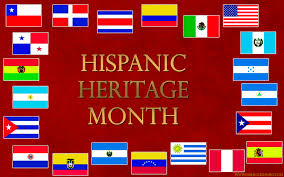Each year, National Hispanic Heritage Month is observed from September 15 to October 15. The histories, cultures and contributions of American citizens whose ancestors came from Spain, Mexico, the Caribbean and Central and South America are honored and celebrated during this time. The observation started in 1968 as Hispanic Heritage Week under President Lyndon Johnson and was expanded by President Ronald Reagan in 1988 to cover a 30-day period starting on September 15 and ending on October 15. Hispanic Heritage Month was officially enacted into law on August 17, 1988. September 15 is significant because it is the anniversary of independence for many Latin American countries including Costa Rica, El Salvador, Guatemala, Honduras and Nicaragua. Mexico and Chile celebrate their independence in mid-September as well. So in honor of National Hispanic Heritage Month we’ve compiled a few education trends impacting Latino/Hispanics students.
Trend #1: Top Priority
According to Latino Perspectives on K–12 Education & School Choice Survey about one out of five Latino respondents (22%) said “education” was the most important issue facing the country right now, trailing only “economy and jobs” (27%) as a first priority. In fact the Pew Research Center found that eight-in-ten or (83%) of Latino cited education as very important to their vote in the 2016 election, ranking it alongside the economy, health care and terrorism as a top issue.

Trend # 2: Major Implications
Findings from the National Council of La Raz suggest that school-age Latinos are doing better academically today than 15 years ago. In fact, eight out of 10 Latino students are graduating from high school on time. Also noteworthy, six out of 10 students come from households where the mother earned a high school diploma which is a key predictor of a child’s academic success. This is great news for Latinos and equally important for the US and here’s why: according to Excelencia in Education the US cannot reach its degree attainment goals without substantially increasing Latino college completion. Latino educational attainment is crucial for the U.S. to meet its future societal and workforce needs for three reasons: First, the Latino population is growing rapidly and will make up a greater percent of the U.S. population by 2020. Second, Latino educational attainment is currently lower than other sub-groups in the US. And third, across the board competitive jobs in the U.S. will soon require education beyond a high school degree. And consider this, of the 11.6 million jobs created since the recession ended in late 2009, 8.4 million of those jobs required at least a bachelor’s degree. These numbers reinforce the importance of education.
Trend #3: Location, Location, Location
Latino students attend a small percentage of schools with large Hispanic populations mainly in Florida, Texas and California. Also noteworthy, almost 70 percent are public or open access universities. The number of Hispanic serving institutions (HSI) have increased with more universities working towards the designation. To qualify as an HSI, at least 25 percent of the student body must be Hispanic or Latino.
Ultimately, the path to higher education for Latino students requires academia, civic leaders and the business community to adjust to a growing base of college bound students. The wide scale implications to the nations simply cannot be ignored. However, at present, there are several barriers such as performance funding requirements and limited need based funds for students that will need financial support to persist.
Related Stories:
Latinos in the Sunshine State: National Council of La Raza Economic Conditions Report
Florida Economy Mirrors Nation in Value of a Bachelor’s Degree

